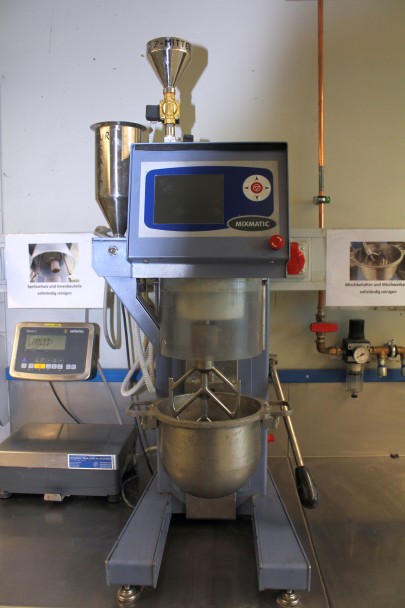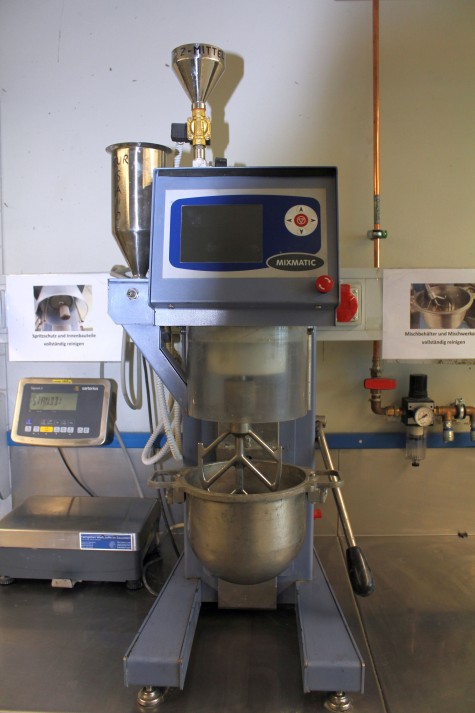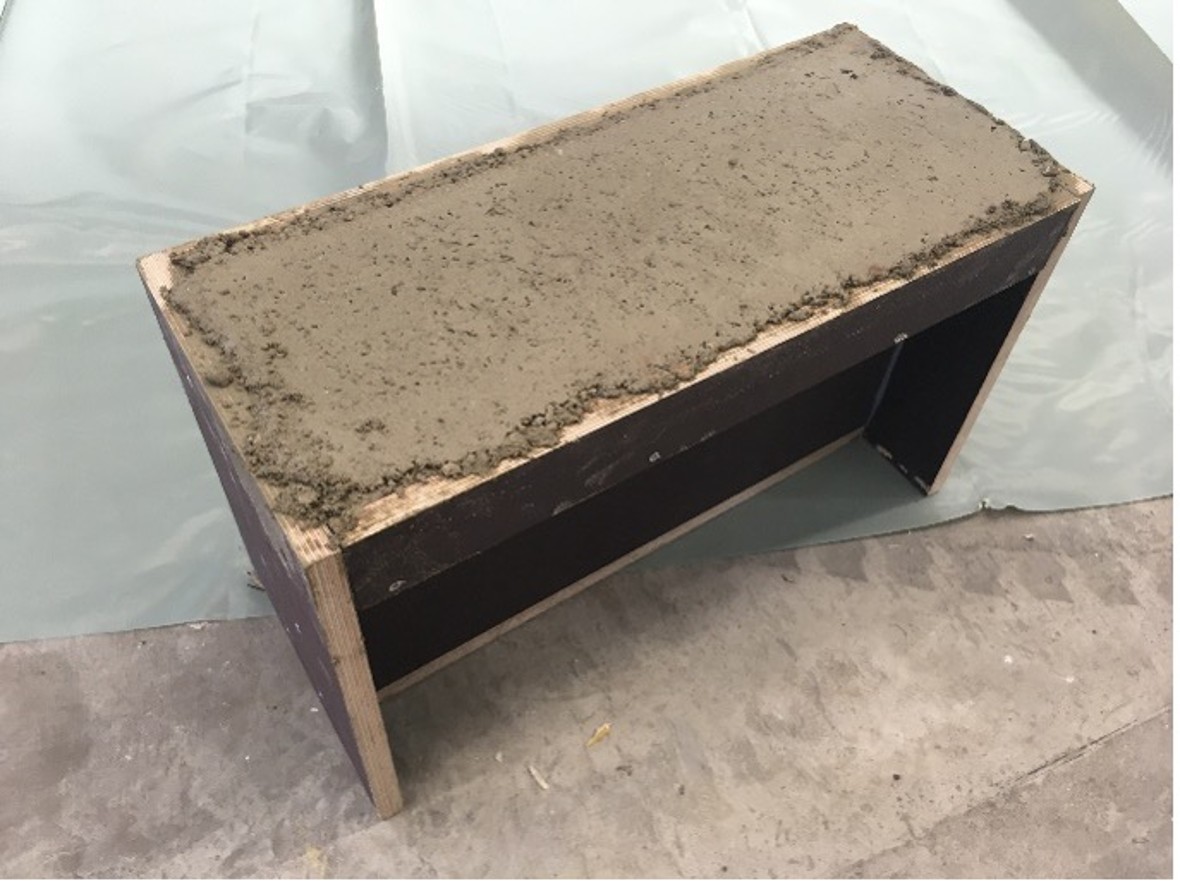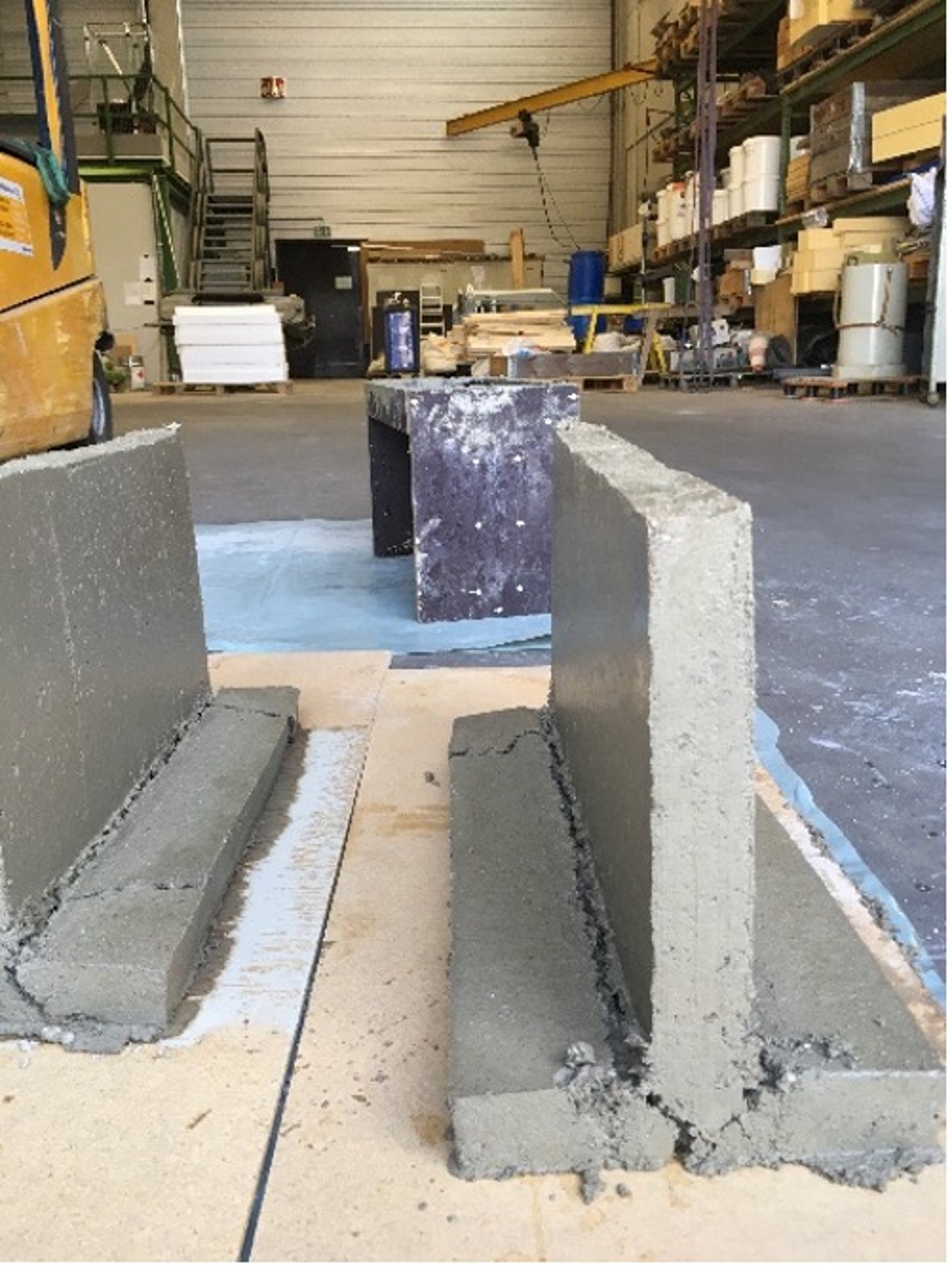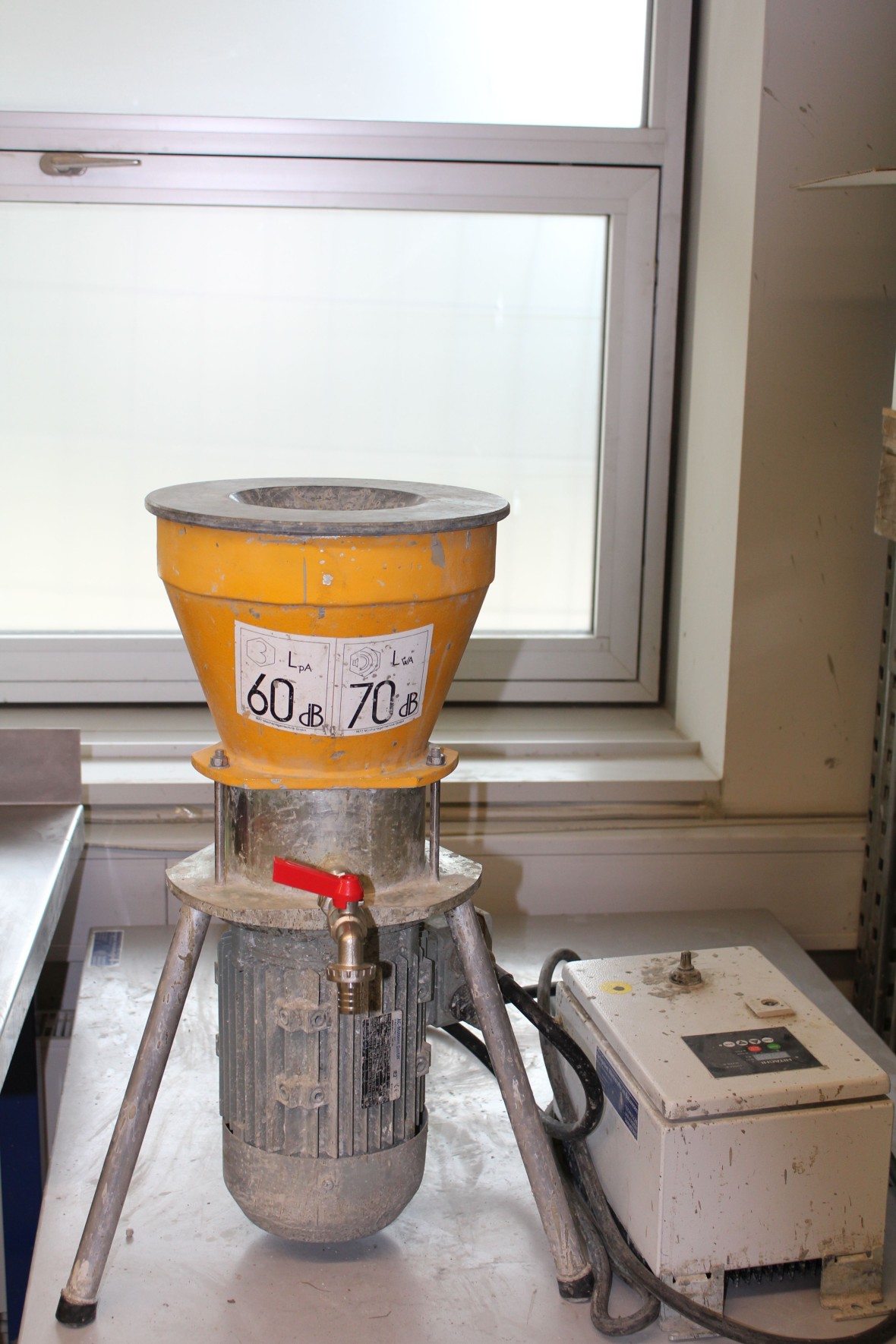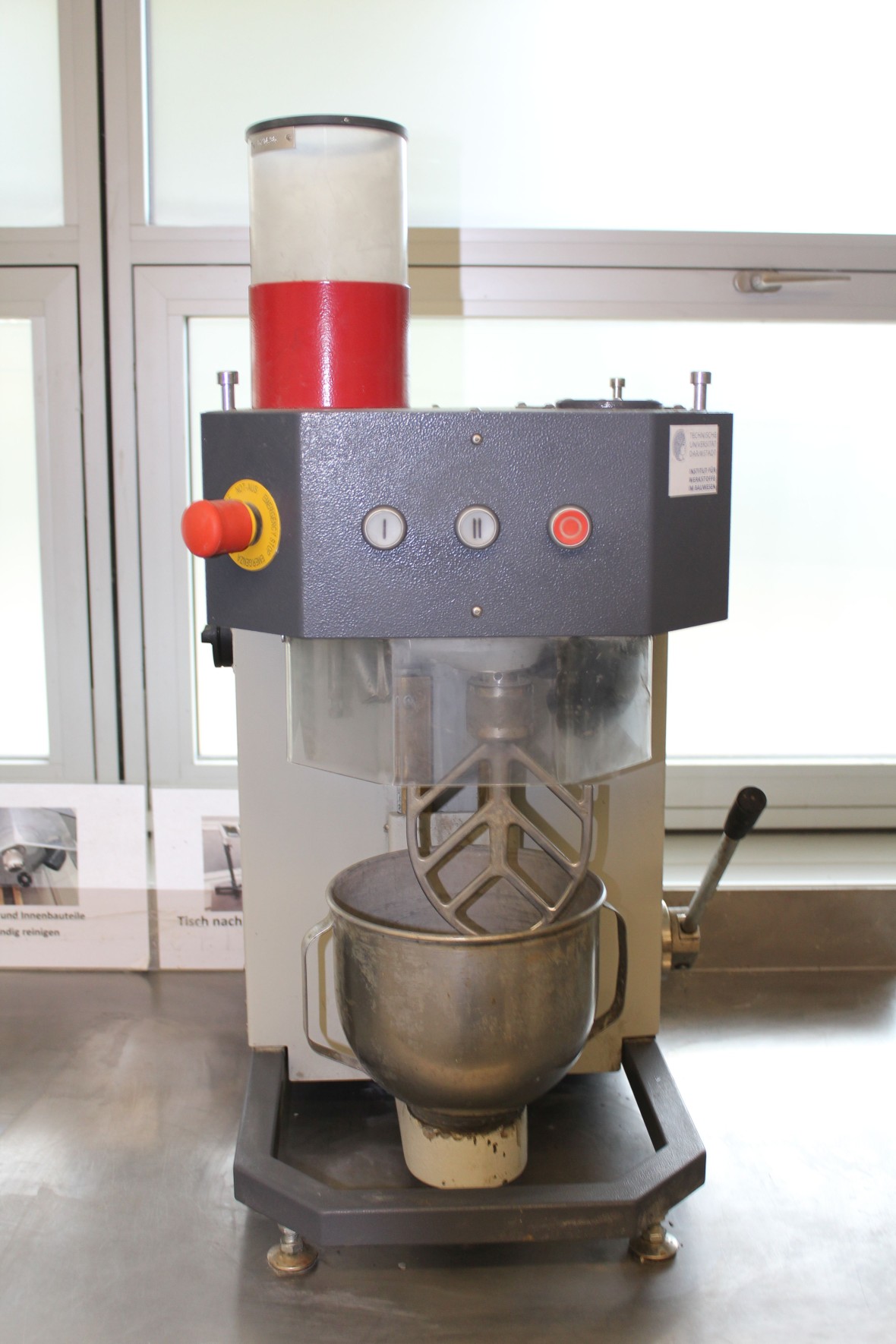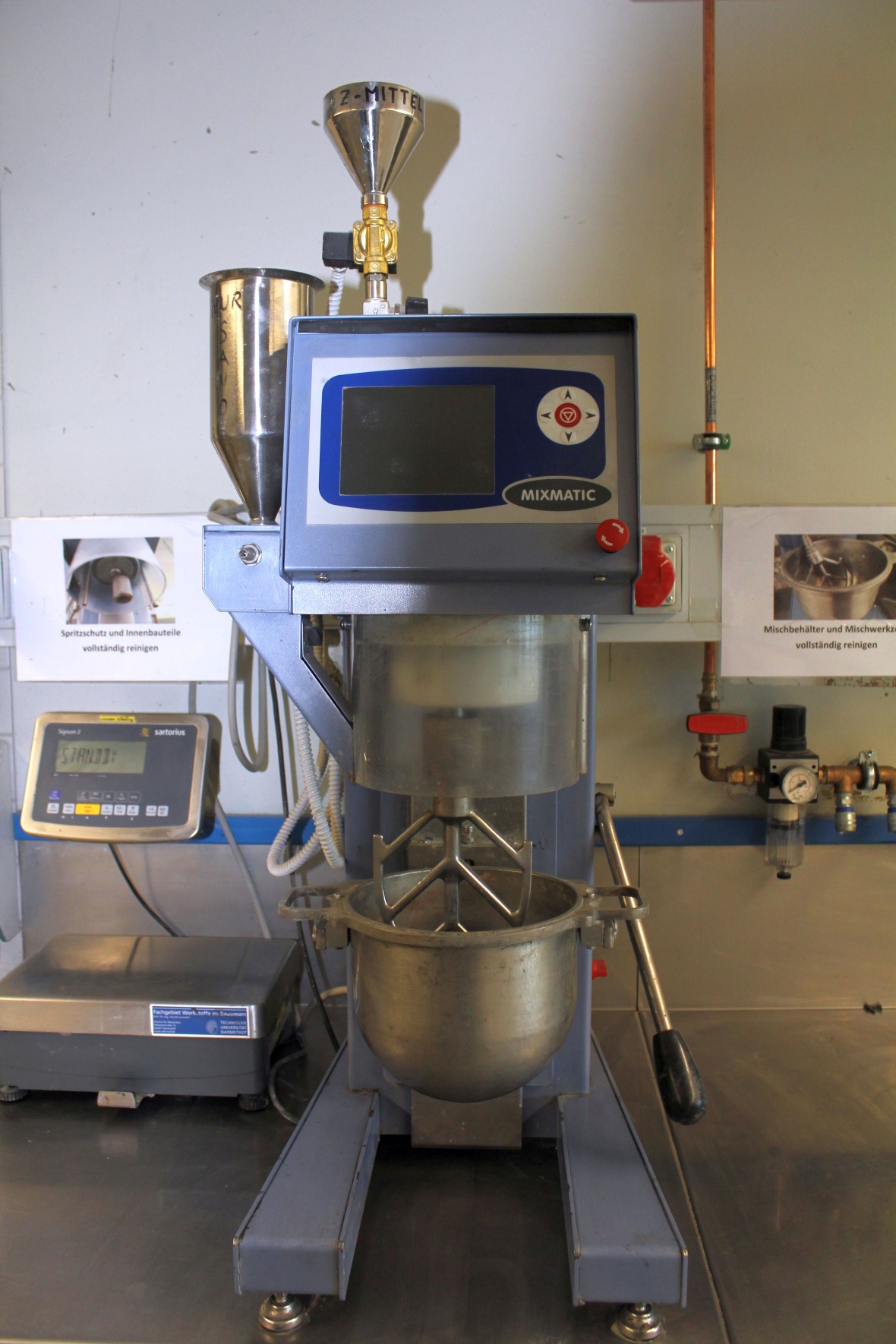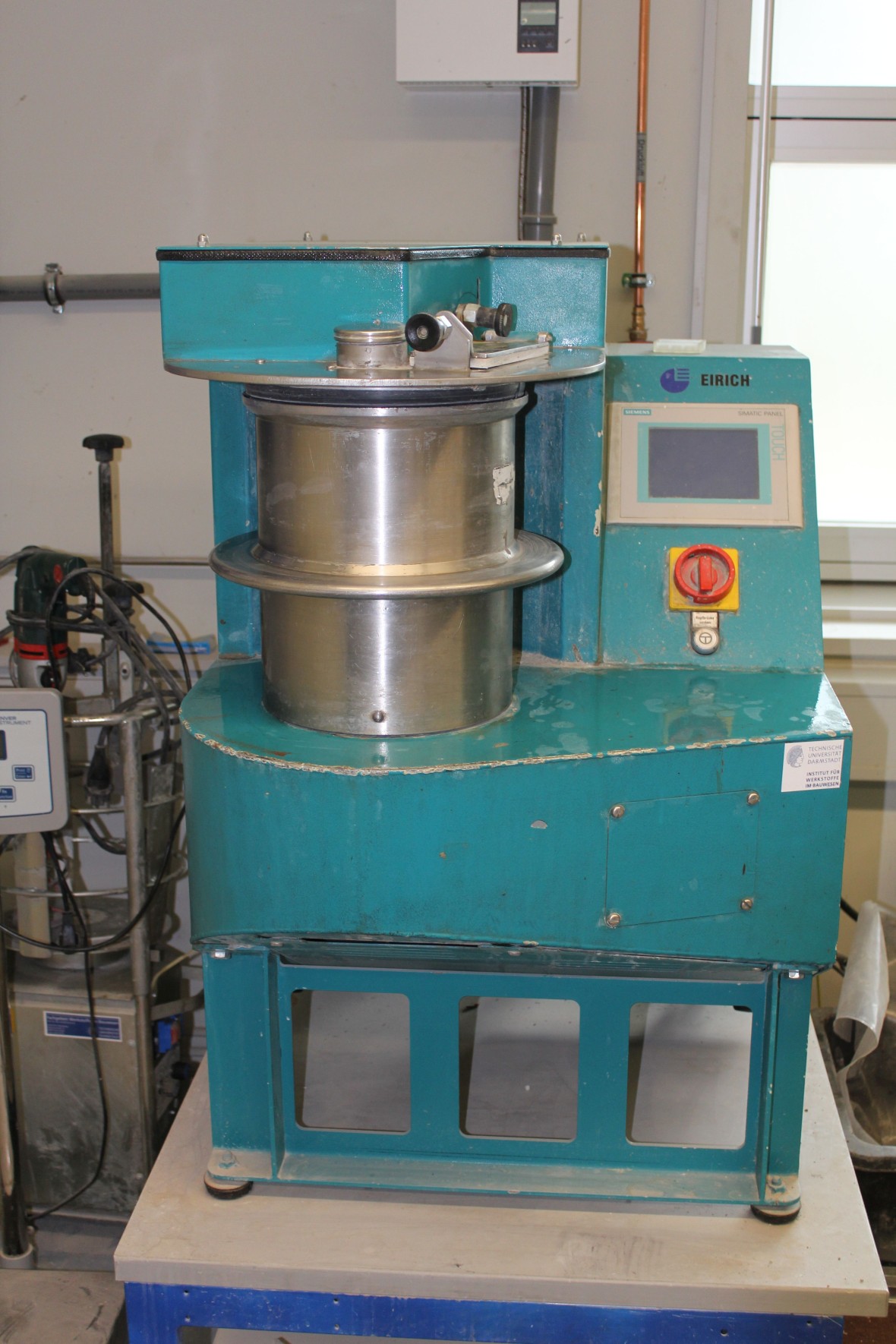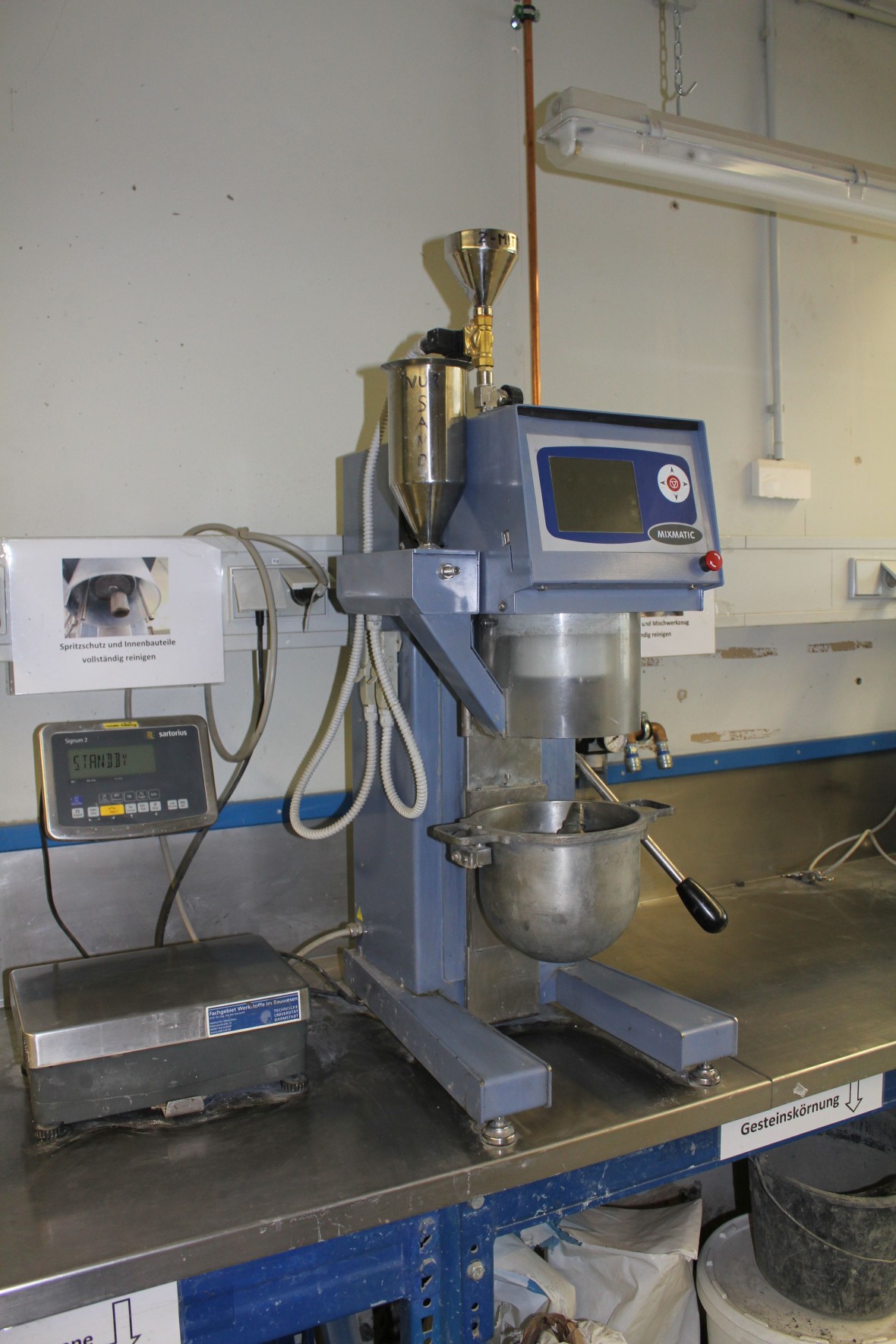Mortar laboratory
In addition to a chemistry, micro and macro laboratory, the Institute of Construction and Building Materials has a standard air-conditioned mortar and concrete laboratory with a wide range of equipment including a variety of mixers and apparatus for the investigation of fresh, uncured mineral materials. Some of this equipment is shown on this page.
Investigations:
In the mortar laboratory new designs can be tested in addition to the standardized tests on fresh concretes and fresh mortars (spreading dimension, slump, compaction dimension, etc.).
At WiB, various binder systems (cementitious, geopolymers, effect of new additives) are researched, developed and refined to achieve the best possible effect depending on the application.
The development and production of different formworks for special specimen geometries for further investigations or as object of investigation themselves are a routine at the WiB.
Design of an individual formwork
Simulation of vibro-pressing process with immediate stripping on a laboratory scale
- Investigation of the stability during immediate stripping of narrow samples made of stiff concrete



